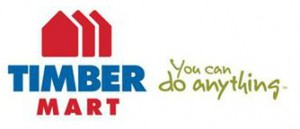Gardening in Gold River Soil
How important is soil ph? It really depends on how much time and money you choose to spend on your garden. On the ph scale from 1 to 14, everything below 7 is acidic and everything above 7 is alkaline. Each living thing in the garden has its own unique ph. Of the many amazing cycles and rhythms within your own backyard, this is just one more intricacy of nature of which a gardener should be aware. Excessive rain, organic decomposition from pine and other evergreen trees, an abundance of buttercup, dandelions, and horsetail are all signs of acidic soil. So, there really is no need to test Gold River soil. It is acidic. This is however, not necessarily a bad thing. It’s just good to know what you are dealing with and, in the end, will save you a lot of work. Many plants that make Vancouver Island so beautiful thrive in acidic soil. Spring is especially beautiful here with blooming rhododendrons, azaleas, heather, magnolias, and many other flowering trees. So, for the decorative beds and border gardens, life is easier for you (and the plants!) if you stick to the acid loving models.
Now, the vegetable garden is a different story. This is where you might want to test your soil for ph before making any amendments. Amending garden soil for ph provides maximum utilization of nutrients and fertilizers to help your vegetables perform at their best. A very general rule is that vegetables like soil ph between 6.0 and 7.5 with root veggies preferring a little bit on the alkaline side and those that are edible above the ground prefer it a little bit acidic. So, the root veggies can be planted in soil amended with a bit of lime or maybe a dusting of wood ash. Both additives provide an increase to the ph of your soil. Wood ash is easily available in Gold River since many people have wood stoves. Just be careful with it, as too much can create soil that won’t allow nutrients to be taken up by plants. Wood ash also wards off root maggots and provides potassium. As with lime, the best time to add wood ash is in the fall. However, they may be added in the spring, but just won’t have as much time to work. The right amount is four to five pounds, or shovelfuls, per 100 square feet, mixed into the top two to three inches of soil.
Now, after you’ve amended your soil for ph, you can now consider fertilizer: N P K. These three symbols are on every package of fertilizer indicating the ratio of nitrogen (for green health), phosphorous (for healthy roots and flowers) and potassium (for a healthy plant immune system). All fertilizers work best when soil is in the right zone of ph. I would like to digress for one comment: as I have indicated in previous articles, in Gold River it is good to lime your lawn before you start pouring the fertilizer on. Without the lime, you might be wasting your money. Back to the vegetable garden, the root growth for your veggies can be enhanced by adding extra phosphorous in the form of bone meal or super phosphate (0-20-0). Sprinkle it directly onto the rows just before planting the seeds, and rake it into the top inch of the soil so it can be used by the young seedlings when they come up. As you may notice, I am not very fussy about exact amounts, but a “handful” is about right for every four to six square feet. Phosphorous won’t burn the seeds, but the plants will only use as much as they need. So, extra handfuls might just go to waste.
One last point about the soil in your vegetable garden is about the texture. When squeezing a handful of dirt, it should almost stay in a clump. Additives such as manure, compost, and sea soil give the soil more weight; and peat moss, sand, vermiculite, or perlite can be used to lighten it. These additives do add acidity to the soil, however, it is minimal.
There is much more detail on this topic, that can be a bit tedious and boring for some of us. However, more research may help others. When gardening, so many things are out of our control: weather, bugs, diseases, etc.. Nowadays, we are fortunate to have the internet at our finger tips to help us solve many gardening problems. A good vegetable garden is the result of some careful work and education combined with plain and simple good luck. Even though every season is a bit of a gamble, it helps to keep us interested to play the game. So, I wish you good luck for the season of 2015!
Bridgite Messer
[email_link]

